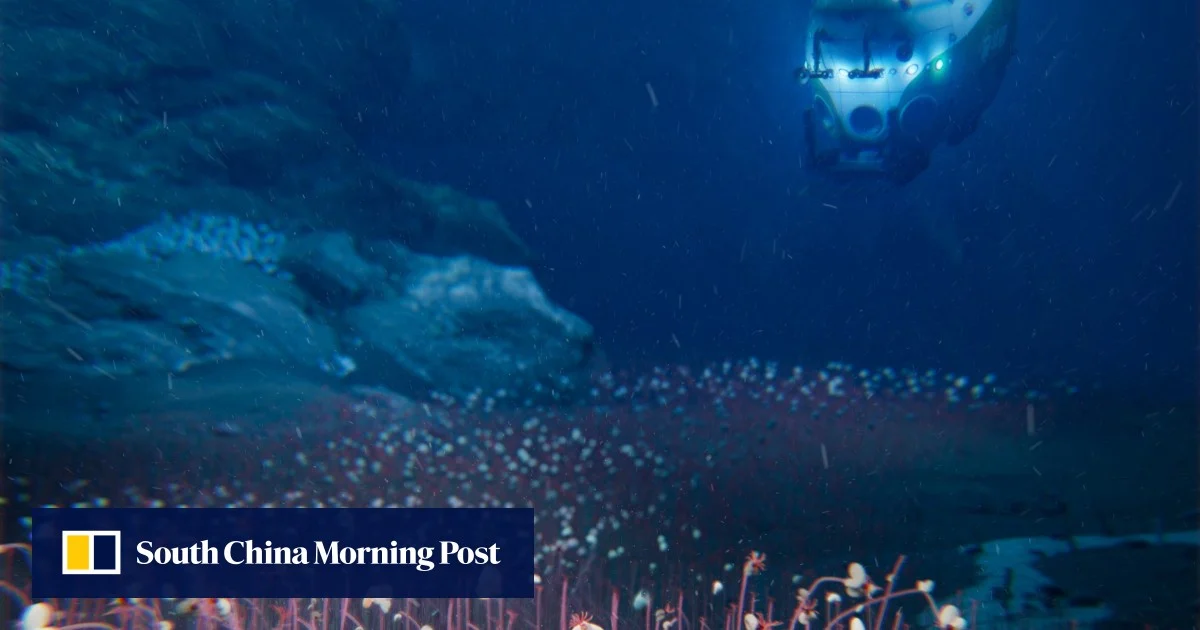
‘Extreme limits’: China-led mission discovers Earth’s deepest animal oasis
How did your country report this? Share your view in the comments.
Diverging Reports Breakdown
‘Extreme limits’: China-led mission finds thriving oasis in Earth’s deepest reaches
The remarkable creatures have bypassed the need for sunlight. Instead of photosynthesis, they obtain energy from chemical reactions. Researchers have found that the methane used by the colonies is made through microbial processes in organic matter found in the sediments. The team investigated the trench bottom of the Kuril–Kamchatka Trench and the western portion of the Aleutian Trench.
Advertisement
The improbable hidden oasis of life – in numbing waters up to 9,500 metres (31,167 feet) deep – synthesises energy by feasting on chemicals such as hydrogen sulphide and methane that seep out of faults in the tectonic plate.
The remarkable creatures have bypassed the need for sunlight. Instead of photosynthesis, they obtain energy from chemical reactions. The researchers have found that the methane used by the colonies is made through microbial processes in organic matter found in the sediments.
Tube worms called “frenulate siboglinids” with small mollusks on the tops of the tubes are seen at a depth of 9,320 metres (30,500 feet) in Wintersweet Valley. Photo: Handout via Reuters
Scientists from China, Denmark, New Zealand and Russia reported their “discovery of the deepest and the most extensive chemosynthesis-based communities known to exist on Earth” in an article published in the peer-reviewed journal Nature on Wednesday.
“Given geological similarities with other hadal [deepest] trenches, such chemosynthesis-based communities might be more widespread than previously anticipated,” they wrote.
“These findings challenge current models of life at extreme limits and carbon cycling in the deep ocean.”
Advertisement
The team investigated the trench bottom of the Kuril–Kamchatka Trench and the western portion of the Aleutian Trench during a month-long mission from July last year using the Chinese submersible Fendouzhe , or Striver.
